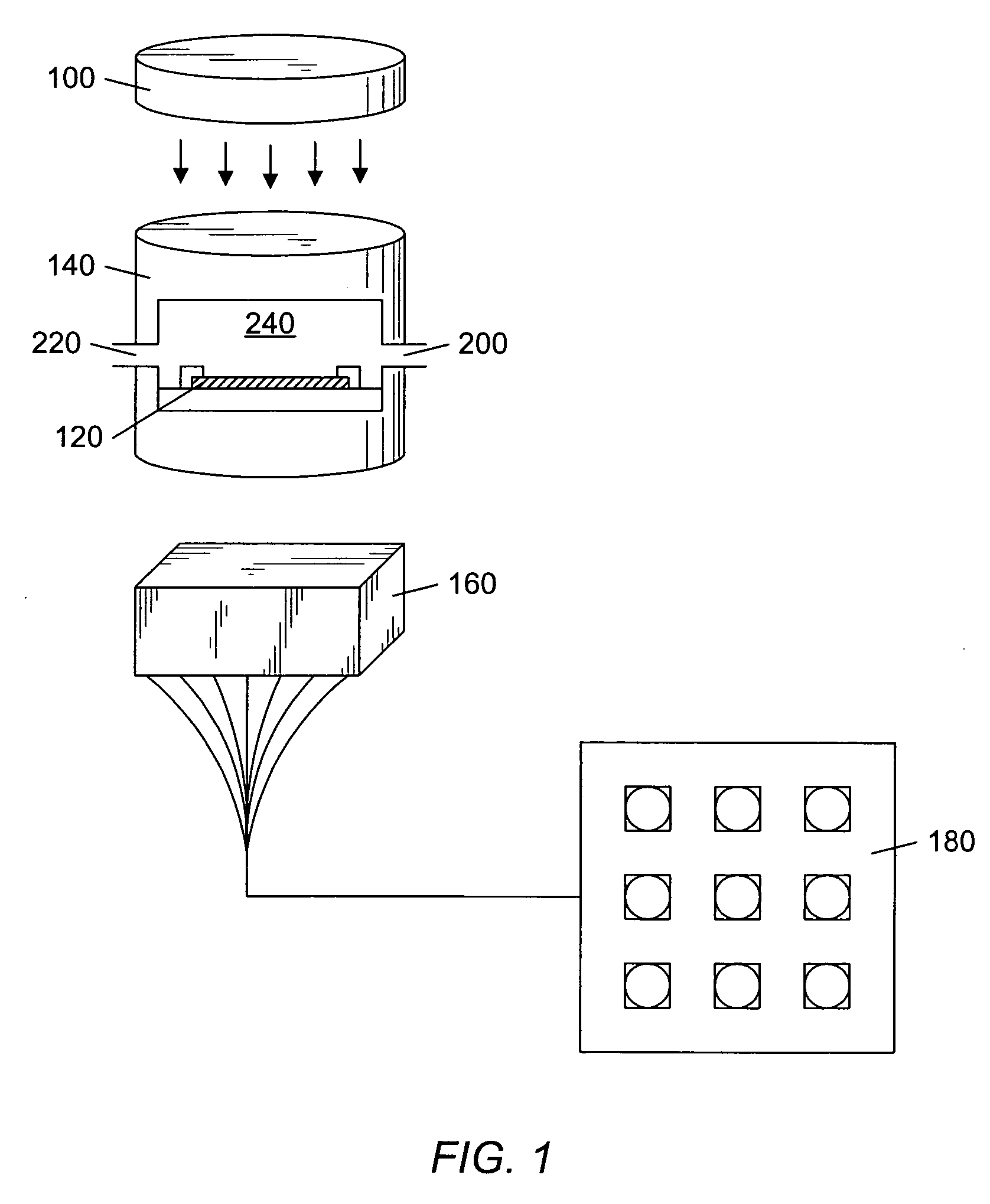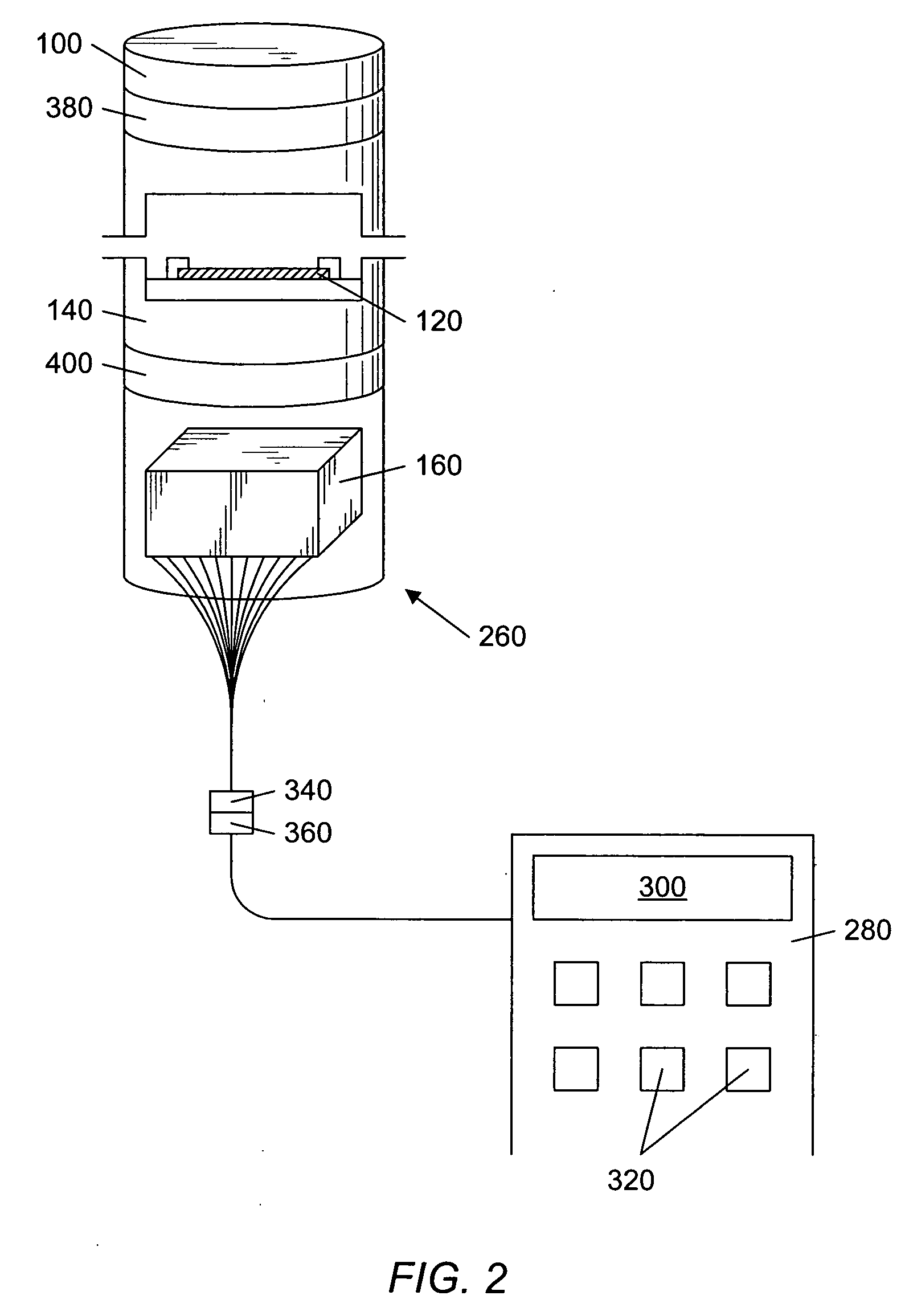Method and system for the analysis of saliva using a sensor array
a sensor array and saliva technology, applied in the direction of material analysis, filter regeneration, sequential/parallax process reaction, etc., can solve the problems of physical barrier, difficulty in having relevant markers, and inefficient current methods for their measuremen
- Summary
- Abstract
- Description
- Claims
- Application Information
AI Technical Summary
Benefits of technology
Problems solved by technology
Method used
Image
Examples
Embodiment Construction
[0065] Herein we describe a system and method for the simultaneous analysis of a fluid containing multiple analytes. The system may generate patterns that are diagnostic for both individual analytes and mixtures of the analytes. The system, in some embodiments, is made of a combination of chemically sensitive particles, formed in an ordered array, capable of simultaneously detecting many different kinds of analytes in saliva rapidly. An aspect of the system is that the array may be formed using a microfabrication process, thus allowing the system to be manufactured in an inexpensive manner.
[0066] Various systems for detecting analytes in a fluid and gases have been described in U.S. Pat. Nos. 6,045,579; 6,680,206; 6,649,403; and 6,713,298; U.S. patent application Publication Nos. US 2002-0197622 A1, US 2003-0064422 A1; US 2004-0053322 A1; and US 2003-0186228 A1; and in U.S. patent application Ser. No. 09 / 287,248 all of which are incorporated by reference as if fully set forth herei...
PUM
| Property | Measurement | Unit |
|---|---|---|
| Width | aaaaa | aaaaa |
| Transparency | aaaaa | aaaaa |
| Distance | aaaaa | aaaaa |
Abstract
Description
Claims
Application Information
 Login to View More
Login to View More - R&D
- Intellectual Property
- Life Sciences
- Materials
- Tech Scout
- Unparalleled Data Quality
- Higher Quality Content
- 60% Fewer Hallucinations
Browse by: Latest US Patents, China's latest patents, Technical Efficacy Thesaurus, Application Domain, Technology Topic, Popular Technical Reports.
© 2025 PatSnap. All rights reserved.Legal|Privacy policy|Modern Slavery Act Transparency Statement|Sitemap|About US| Contact US: help@patsnap.com



